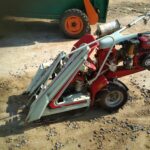AITEC: Protected Agriculture
The development of protected agriculture technology for horticulture and high-value crops is critical for sustainable crop intensification. Protective structures, such as greenhouses, screen houses, and tunnels, are known worldwide as production systems for high-quality vegetable and fruit crops.
Overview of Protect Agriculture
Protected Agriculture includes structures, technologies and tools to create micro environment to harness light, air, water and nutrients optimally to achieve per unit maximum yield with enhanced quality.
Different types of protected structures are used for different crops and in according to the local climate. Commonly used
protected structures are — low tunnels, walk-in tunnels,
net houses, greenhouses, shade net house, poly-house, insect net house.
In addition to structures , protected technologies include surface cover applications liked soil solarization, plastic mulches, growing media, planter. The use of protected agriculture results in improved water-use efficiency, increased productivity per unit input and land, improved product quality, reduced use of pesticides due to integrated pest and disease control. Plants are given optimum growing environment through technologies / applications thus it enhances its growth, onsets of flower, fruits to achieve potential yield along with quality in crops.
Establishment of a NetHouse
Filmed in Dodoma, Tanzania at AITeC Dodoma
Interested in learning more about protected agriculture or in establishing structures at your farm?
R&D for Protected Agricutlure
The AITEC evaluates different types of structures for production at for the region and aims to scale up the practice of protected agriculture to farmers. The evaluation of these structures is monitored using specific equipment for research and development such as sensors and climate control monitors.
The AITeC farm will introduce net-houses, walking tunnels, low tunnels, tropical greenhouses, climate-controlled technology and mulching.
Low Tunnels
Low tunnels are made of small metal or PVC hoops pushed into the soil over a bed of crops, and covered with spun-bonded polypropylene row covers. Low tunnels warm the soil and protect plants from pests, frost and wind.
High Tunnels
A high tunnel is a polyethylene (plastic) covered structure that allows growers to increase production of certain crops, grow some crops that could not otherwise be grown in their area, and extend the growing season of the crops grown.
The modified climate inside the high tunnels also creates the opportunity to produce crops that can’t normally grow if unprotected, diversifying the farming system.
Net Houses
A Net house is a structure enclosed by agro nets or any other woven material to allow required sunlight, moisture and air to pass through the gaps. It creates an appropriate micro climate conducive to the plant growth. It is easy to construct, allows for physical protection from pests, balances the environment temperatures, is resistant to high wind speed and can produce an above average yield of selected crops via a staking system.
A net house is one the most affordable agricultural structure.








